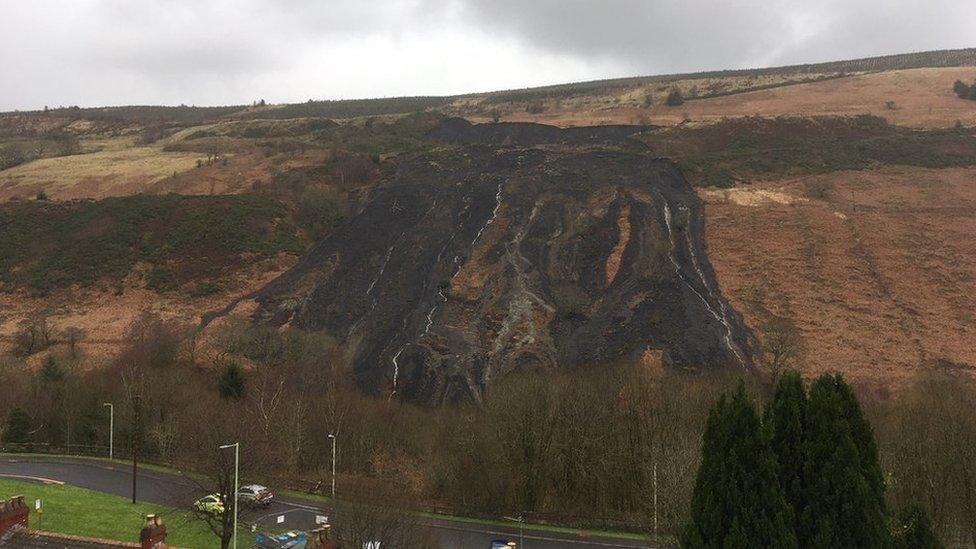Coal tips in Wales: New maps reveal 350 sites most at risk
- Published

The landslide at Tylorstown in February 2020 followed three storms in succession
New maps showing old coal tips across south Wales have been published, as part of safety measures.
Hundreds of properties lie on old colliery spoil sites, with Welsh ministers drawing a list of 350 tips at highest risk and needing regular checks.
It follows a landslide in Tylorstown, Rhondda Cynon Taf, after 2020 storms.
The Coal Tip Safety Taskforce has now identified 2,566 disused coal tips in Wales, mostly in the southern valleys., external
The taskforce, set up by the Welsh government, includes the Coal Authority, local councils and Natural Resources Wales (NRW).
Old tips are graded according to risk, with 267 in category C needing an annual inspection and 83 in category D needing twice-yearly inspections.
The remaining 2,200 tips in categories A and B will need fewer checks, but inspections have also already started on tips in category B too.
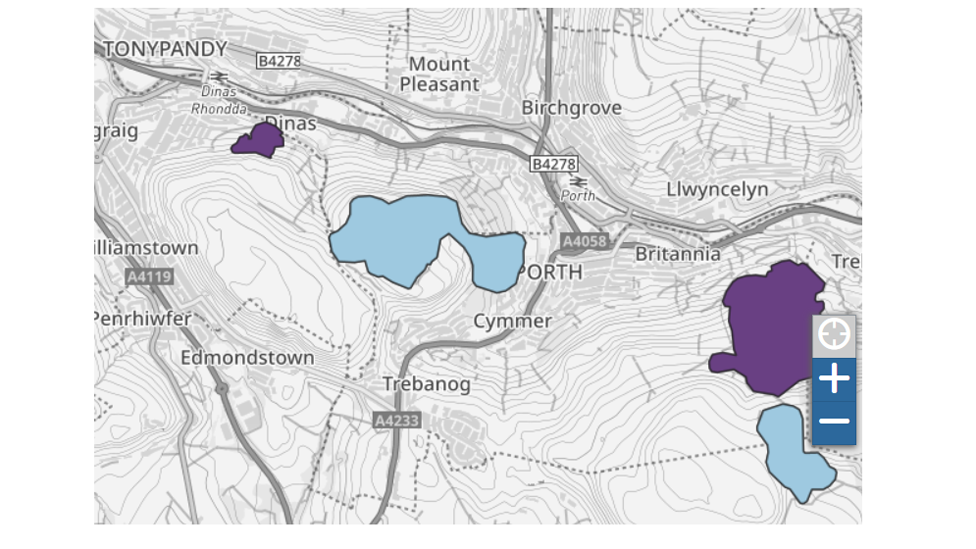
The interactive maps have been published online
Why is this happening?
The tips are a legacy of decades of coal mining in Wales, which at its peak in the early 20th Century saw 620 collieries operating.
When coal was dug out, the "spoil" or waste material removed at the same time was piled into tips and became part of the landscape in mining communities.
But bad weather brings the risk that some may become unstable, and this led to a major exercise over the last three years to collect comprehensive data on each tip.
The C and D priority tips involve around 1,500 different landowners and 600 people who have properties on them. The exercise has shown the complexity of land ownership around tips - some can have multiple owners.
Just over a third of tips in the most at-risk categories are in public ownership, but most are privately or commercially owned.
All land and property owners have been written to, while people living in communities close to C and D tips are being invited to online briefings and five public meetings over the next few weeks.

More than half the priority tips are in neighbouring local council areas - Rhondda Cynon Taf (RCT), Merthyr Tydfil and Caerphilly.
RCT has more than a third of the category D tips but the inspection programme covers 14 council areas, as far afield as Wrexham and Pembrokeshire.
It does not include extra monitoring work carried out by councils and NRW, especially in the wake of storm or flooding events.
Meanwhile, technology such as drones, tilt meters and sensors is being deployed at 70 of the 83 category D tips, with hopes that new techniques will be developed with the help of university research.
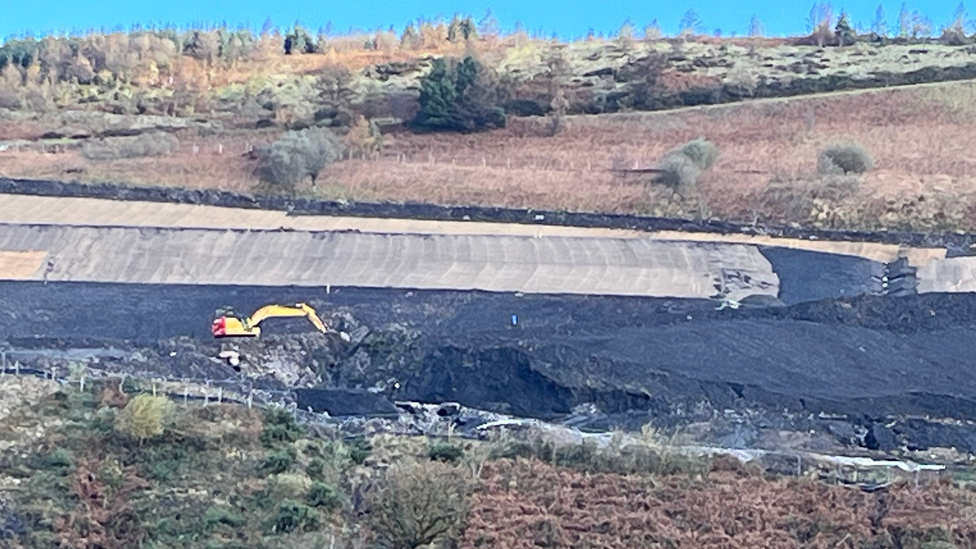
Maintenance work continues on the Tylorstown tip in the Rhondda
NRW also has weather stations, including rain gauges, at 10 of the highest risk tips.
The taskforce is also in contact with the mortgage and insurance industry about the inspection programme, hoping it will offer assurance over property prices and premiums.
Minister for Climate Change Julie James made the announcement in the Senedd, saying it had been a "mammoth undertaking" to record and categorise all disused coal tips in Wales into a single central database for the first time.
"We have focused on category C and D tips as they are more likely to need frequent inspections so we can identify and carry out any maintenance when needed," she said.
"It does not mean they are unsafe, but they may be larger and are more likely to be closer to communities or major infrastructure."
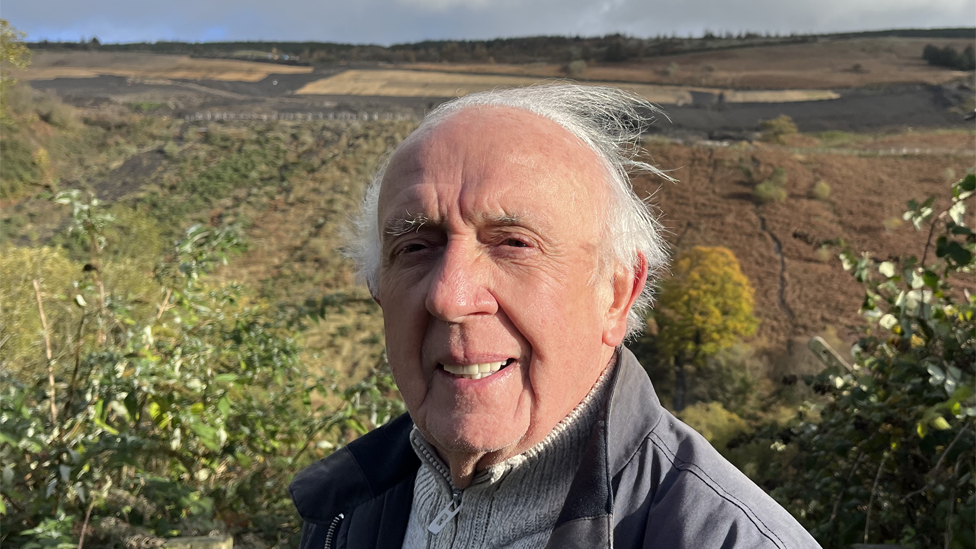
Jeff Coombes said his father told him the tips were there before he was born
So far, £44.4m has been provided until the end of 2024-25 to cover maintenance of old tips.
Tylorstown is one of the category D tip sites and has been subject to remediation works, which are expected to cost more than £12.5m., external
'We don't want another Aberfan'
Former miner Jeff Coombes, 76, lives close to the foot of the Tylorstown tip and recalls the events of February 2020.
"It was a roaring noise - I didn't know what it was - it wasn't until someone said 'have you seen the tip?' and as I looked over there, I saw it was coming down," he said.
"It was mounting and mounting, until at the end it filled the river up and you were looking at it with amazement."
Was he reassured by the monitoring?
"It's got to be done. But when will it be done? It's money isn't it. Probably that's how coal was so cheap, they dumped the rubbish anywhere. It's got to be done - we don't want another Aberfan do we?"
The tragedy in the village of Aberfan saw a total of 116 children and 28 adults killed when a colliery spoil tip collapsed, engulfing a primary school and surrounding houses on 21 October 1966.
"Tip slides are the main problem of course - the most infamous and horrific example of that was the Aberfan disaster," said coalfield historian Dr Ben Curtis.
He said a lot had been done in the wake of Aberfan but "the nature of the coal industry is that these tips were produced, the industry has gone but the tips in many cases are still with us and still remain the potential to cause problems in the future".
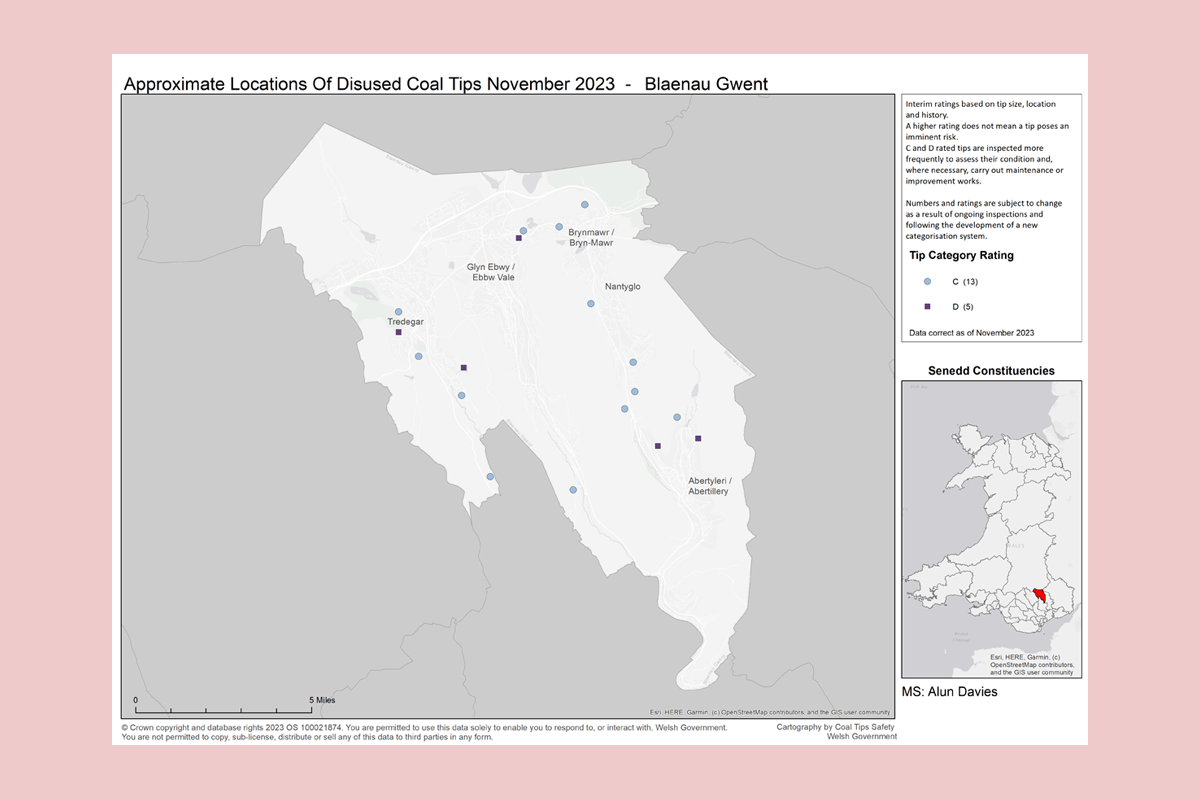
The locations of the old tips are published online. This example shows Blaenau Gwent
This is the first time a comprehensive list of tips and site owners has been produced and made available.
The maps have been published online, external, bringing together data from satellite images, old World War Two aerial photography, OS mapping, old mine records and site surveys.
New legislation is also currently being drawn up which aims to enshrine the safety of old tips in law to cover management, monitoring and maintenance.
"Our priority is to ensure that people living and working near coal tips feel safe and secure now and in the future," said Ms James.
"Our proposals will achieve that by setting in place a long-term, fit for purpose regime which will be led by a newly-created public body."

Do you live close to a coal tip? Share your experiences by emailing haveyoursay@bbc.co.uk, external.
Please include a contact number if you are willing to speak to a BBC journalist. You can also get in touch in the following ways:
WhatsApp: +44 7756 165803
Tweet: @BBC_HaveYourSay, external
Please read our terms & conditions and privacy policy
If you are reading this page and can't see the form you will need to visit the mobile version of the BBC website to submit your question or comment or you can email us at HaveYourSay@bbc.co.uk, external. Please include your name, age and location with any submission.
Related topics
- Published12 May 2022
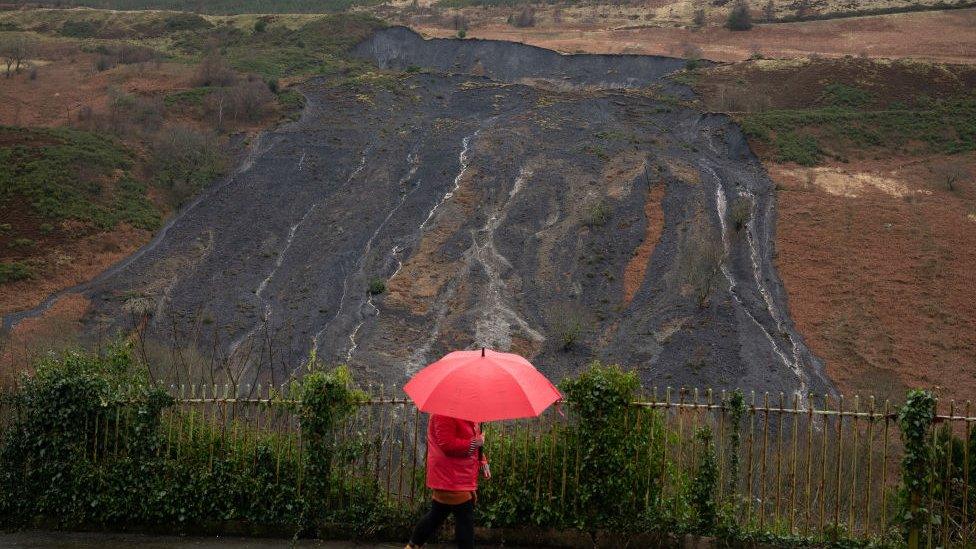
- Published16 February 2021
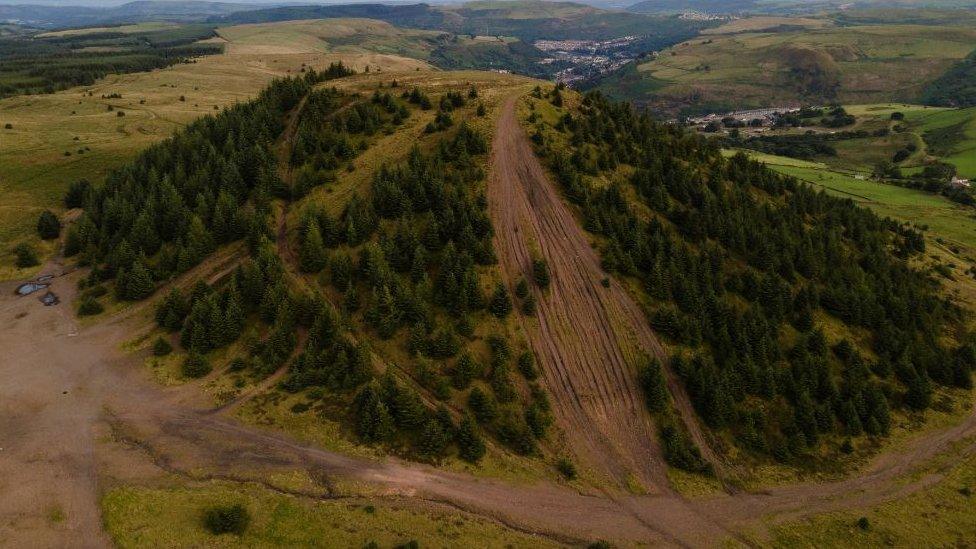
- Published28 September 2021

- Published8 October 2020
